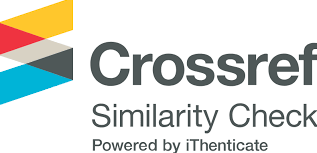Study on propagation of new triploid acacia (X101, X102) by tissue culture method
Keywords:
Tissue culture method,, triploid acaciaAbstract
Polyploid is a natural phenomenon. Polyploid in animals is rather rare.
However, it is quite common in plants, occurring in more than 70% of
flowering plants. In forestry, the selection and use of polyploid varieties is
a new direction and it is expected to have new varieties with large
differences in genotypes and phenotypes, because forest trees are often
heterozygous. Research on tissue culture method for some promising
triploid acacia lines (X101, X102) will contribute to the completion of the
triploid breeding process, as well as a basis for creating a strateg y to
improve the variety polyploid for tropical Acacia species in Vietnam.
Tissue culture method results for a number of triploid colloidal lines
showed that the use of excess shoots or axillary buds sterilized with 0 .05%
HgCl2 for 5 minutes has the highest efficiency: the survival rate (80%); the adventitious shoot rate (28.4%). Beside, the use of 3% javel solution for 20
minutes also gave a quite good result: the survival rate (70.6%); the
adventitious shoot rate (18.2%). To protect the environment and human
health, javel solution is recommended to use in disinfection. Effective
clusters of shoots were further cultured in Murashige and Skoog modified
medium (MS) with supplementation of individual or synthetic growth. The
highest number of shoots/cluster was achieved in MS * + 1.0 mg/l BAP +
0.25 mg/l GA3 (5.0 - 5.5 shoots/cluster) and the rate of effective shoots
(48.6 - 51.9%). Effective shoots were up to the standard for rooting in
1/2MS * + 2 mg/l IBA, the rooting rate was 78.4 - 80.1%.
References
1. Lê Đình Khả, 2003. Chọn tạo và nhân giống cho một số loài cây trồng rừng chủ yếu ở Việt Nam. NXB Nông nghiệp, Hà Nội.
2. Triệu Thị Hà, Cấn Thị Lan và Đồng Thị Ưng, 2014. Nghiên cứu nhân giống Keo lá tràm (Acacia auriculiformisA. Cunn. Ex Benth) bằng phương pháp nuôi cấy mô tế bào. Tạp chí Khoa học Lâm nghiệp, số 4, 3508 - 3515.
3. Đoàn Thị Mai, 2003. Nhân giống cho một số loài cây trồng rừng có năng suất, chất lượng cao bằng phương pháp nuôi cấy mô. Báo cáo Hội nghị “Công nghệ sinh học” toàn quốc. Hà Nội, tháng 11 năm 2003.
4. Đoàn Thị Mai, Lê Sơn, Lương Thị Hoan, Ngô Thị Minh Duyên, Nguyễn Thiên Hương, 2005. Nhân giống một sốloài cây trồng rừng có năng suất, chất lượng cao bằng phương pháp nuôi cấy mô. Tạp chí Khoa học Lâm nghiệp.
5. Đoàn Thị Mai, Nguyễn Thị Mỹ Hương, Vũ Thị Ngọc, Trần Thanh Hương, Văn Thu Huyền, 2009a. Nuôi cấy một số giống keo lai mới chọn tạo. Tạp chí Khoa học Lâm nghiệp, số 2: trang 905 - 910.
6. Đoàn Thị Mai, Lê Sơn, 2011. Nhân nhanh giống keo lai tự nhiên, keo lai nhân tạo, Bạch đàn Uro, Bạch đàn lai nhân tạo và Lát hoa mới chọn tạo bằng công nghệ tế bào. Báo cáo tổng kết đề tài thuộc chương trình công nghệ
sinh học trong nông nghiệp và phát triển nông thôn.
7. Griffin A, Midgley S, Bush D, Cunningham P, Rinaudo A, 2011. Global uses of Australian acacias - recent trends and future prospects. Diversity and Distributions 17, 837 - 847.
8. Hai PH, Harwood C, Kha LD, Pinyopusarerk K, Thinh HH, 2008. Genetic gain from breeding Acacia auriculiformis in Vietnam. Journal of Tropical Forest Science 20, 313 - 327.
9. Phi Hong Hai, 2009. Genetic improvement of plantation - grown Acacia auriculiformis for sawn timber production. PhD Thesis, Swedish University of Agricultural Sciences, Uppsala.








